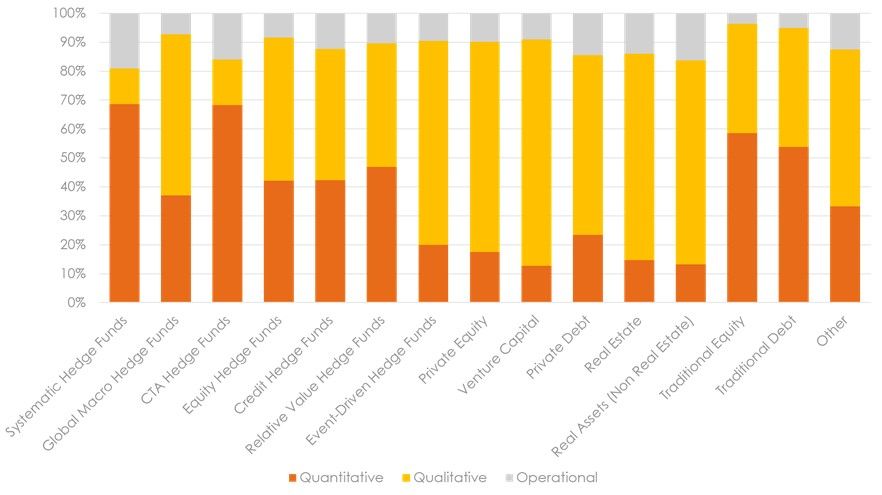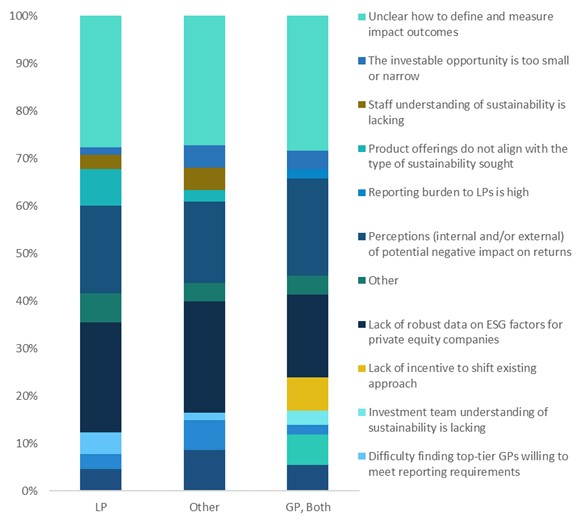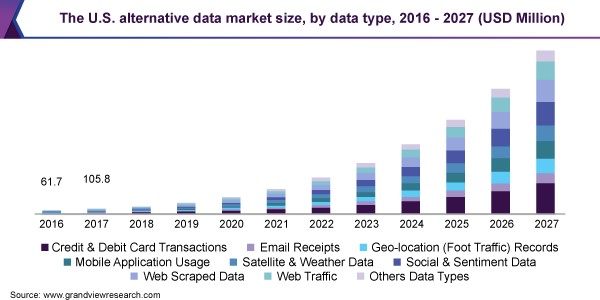By Aaron Filbeck, CFA, CAIA, CIPM, FDP – Director, Global Content Development at CAIA Association Well…we made it. This has been the longest decade year of our lives. Whether it’s been personal or professional circumstances, or simply having been an investor in this market, none of us could escape the volatility-ridden year that was 2020. As we look to the future, there’s a lot to get excited about—a vaccine is being distributed and with it hopefully a society that return to normalcy sooner rather than later. An Eye to the Future In addition to life returning to normal, there’s a lot to get excited about in our industry over the next few years. Diversification once again proved its worth in 2020, supported by further adoption of alternative sources of beta. Our friends at Preqin recently updated their forecast for the future of the alternative investments industry, projecting 9.8% annualized growth in assets under management by 2025. This projected growth is not uniform, however, asprivate equity AUM growth (15.6%) is approximately five times more than that of hedge funds (3.6%) or real estate (3.4%). (It’s worth noting that we measure the universe of alternatives in a slightly different manner, but many of our insights align nonetheless.) “Asset owners of all stripes have contractual obligations and funding expectations, but there is a sizable funding gap relative to the current investable assets in hand and said gap will likely not be closed with a traditional 60/40 stock/bond approach.”—Bill Kelly, CEO of CAIA Association Alternative investments have seemingly hit the “sweet spot” for investors and managers alike. The traditional 60/40 portfolio is facing a structural headwind in most developed nations, as interest rates sit at rock bottom and public market valuations appear stretched relative to history. As a result, many investors have been forced to get creative with their asset allocations, looking to opportunities to properly diversify. Simultaneously, fee compression and the rise of passively managed products have propelled the projected revenue for alternative investment products to nearly half of total industry revenues, despite representing less than 20% of AUM. We expect investor desires to increase allocations to alternatives to match those of asset managers who see the potential for higher revenue, but our industry must make sure interests are aligned and investors understand the products they wish to own.  Source: CAIA Association Due Diligence: How the Investment Process is Changing In a similar vein, we cannot underscore the importance of manager research and due diligence, especially for those investors new to this space. Anyone who allocates to external managers must understand the important balance of quantitative, qualitative, and operational due diligence in due diligence process. It’s not sufficient to have an impressive track record or a Sharpe ratio in isolation – people, process, and culture are finally being recognized as more important indicators of future success. The saying goes that you can’t “eat risk-adjusted returns,” but I would add that you can certainly eat crow if Madoff 2.0 shows up in your office and you take the bait! The importance of due diligence only increases in its importance within the world of private capital, where investor interest lies today. Private equity already presents difficulties in the way of quantitative analysis, especially in terms of integration into a total portfolio, but it is cited as one of the most difficult to analyze according to CAIA Members. What is more, private equity also places a high relative importance on qualitative factors to determine future performance. ESG and Alternative Data Pandemic aside, the secular trends of ESG integration and use of alternative data have added further complexities to the manager research process. Much has already been written on integrating ESG factors into public markets and liquid strategies, but I’m excited to see what can be done with ESG’s integration into private markets. While private market participants have the benefit of long-term time horizons, they also face implementation challenges. Two of the biggest challenges for GPs and LPs, according to a recent Pitchbook survey, is a lack of robust data on ESG factors for private companies and a struggle to define and measure impact.
Source: CAIA Association Due Diligence: How the Investment Process is Changing In a similar vein, we cannot underscore the importance of manager research and due diligence, especially for those investors new to this space. Anyone who allocates to external managers must understand the important balance of quantitative, qualitative, and operational due diligence in due diligence process. It’s not sufficient to have an impressive track record or a Sharpe ratio in isolation – people, process, and culture are finally being recognized as more important indicators of future success. The saying goes that you can’t “eat risk-adjusted returns,” but I would add that you can certainly eat crow if Madoff 2.0 shows up in your office and you take the bait! The importance of due diligence only increases in its importance within the world of private capital, where investor interest lies today. Private equity already presents difficulties in the way of quantitative analysis, especially in terms of integration into a total portfolio, but it is cited as one of the most difficult to analyze according to CAIA Members. What is more, private equity also places a high relative importance on qualitative factors to determine future performance. ESG and Alternative Data Pandemic aside, the secular trends of ESG integration and use of alternative data have added further complexities to the manager research process. Much has already been written on integrating ESG factors into public markets and liquid strategies, but I’m excited to see what can be done with ESG’s integration into private markets. While private market participants have the benefit of long-term time horizons, they also face implementation challenges. Two of the biggest challenges for GPs and LPs, according to a recent Pitchbook survey, is a lack of robust data on ESG factors for private companies and a struggle to define and measure impact.  Source: Pitchbook We expect further transparency, management, and measurement of ESG issues in the years to come, regardless of the asset class and liquidity profile. The sheer amount of alternative data available to investors has grown at an exponential rate in recent years and it does not seem be slowing down any time soon. In fact, alternative data is expected to grow at an 40.7% annualized rate through 2027!
Source: Pitchbook We expect further transparency, management, and measurement of ESG issues in the years to come, regardless of the asset class and liquidity profile. The sheer amount of alternative data available to investors has grown at an exponential rate in recent years and it does not seem be slowing down any time soon. In fact, alternative data is expected to grow at an 40.7% annualized rate through 2027!  Perhaps the future brings about new problems, rather than investors struggling to find data, investors will struggle with analyzing the vast amount that is already available, and they must take an ethics-based approach to harnessing its power. To quote Rich Roche, CAIA of Little Harbor Advisors, investors will increasingly have to face the hard reality of the Unattainable Triangle regarding alternative data: “you can either have it fast, cheap, or good, but you can’t have it all!” Looking to 2021 and Beyond Whether it’s addressing ESG issues in alternative investments, technology’s impact on the investment process, better access to alternative investments, or emerging alternatives, we’ve got you covered. In early 2020, CAIA Association formed its first Global Editorial Board, a group designed to set, monitor, and continuously evaluate key industry trends and develop topical priorities for our content and continuing education effort. This was a purposeful effort to further bring “content to the center” of everything CAIA does, and served as a way to purposefully partner with industry leaders, thought leaders, and our global network of CAIA Members. We look forward to forward to partnering with all of you in the New Year. Seek education, diversification of both your portfolio and people, and know your risk tolerance. Investing is for the long term. Aaron Filbeck, CFA, CAIA, CIPM, FDP is Director of Global Content Development at CAIA Association. You can follow him on LinkedIn and Twitter.
Perhaps the future brings about new problems, rather than investors struggling to find data, investors will struggle with analyzing the vast amount that is already available, and they must take an ethics-based approach to harnessing its power. To quote Rich Roche, CAIA of Little Harbor Advisors, investors will increasingly have to face the hard reality of the Unattainable Triangle regarding alternative data: “you can either have it fast, cheap, or good, but you can’t have it all!” Looking to 2021 and Beyond Whether it’s addressing ESG issues in alternative investments, technology’s impact on the investment process, better access to alternative investments, or emerging alternatives, we’ve got you covered. In early 2020, CAIA Association formed its first Global Editorial Board, a group designed to set, monitor, and continuously evaluate key industry trends and develop topical priorities for our content and continuing education effort. This was a purposeful effort to further bring “content to the center” of everything CAIA does, and served as a way to purposefully partner with industry leaders, thought leaders, and our global network of CAIA Members. We look forward to forward to partnering with all of you in the New Year. Seek education, diversification of both your portfolio and people, and know your risk tolerance. Investing is for the long term. Aaron Filbeck, CFA, CAIA, CIPM, FDP is Director of Global Content Development at CAIA Association. You can follow him on LinkedIn and Twitter.

- Educational Programs
- Content
- Events
- Ethics
- About
- About CAIA
- Leadership
- Chapters
- News
- Impact Report
- Partners
- Join our Team
 Search
Search Close
Close
